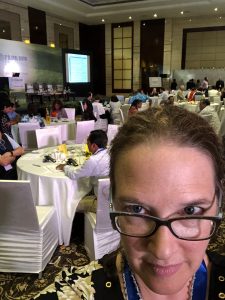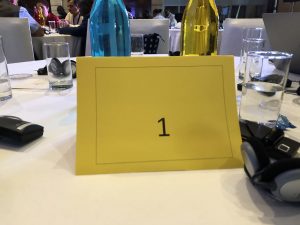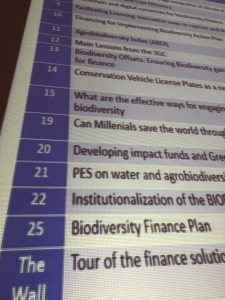Great events get attention, achieve results, and create momentum towards your goals. We all want great meetings, workshops and conferences. Having a list of VIPs who are attending your event helps demonstrate the importance of the topic and the work you are doing. As a result, organizers can focus a lot of energy into woo-ing the head of this or that. At some level that makes sense, as these people have positions of influence, they command large budgets and staff. They also attend other high-level meetings where, when they speak, their interventions are recorded into the official minutes of the meeting, and potentially help influence others who command large budgets and staff to act and support your effort from their lofty level of the hierarchy as well. Great!
However, the expectation and current paradigm is that the VIP participant always gets the prime real estate, that is, they will open the Conference and speak, potentially at some undetermined length, in plenary. This can sometimes pose a problem as you squeeze in more and more VIPs who want to attend. There are only so many hours in the workshop day, and if you fill all the hours with official speakers making pre-prepared speeches from podiums on stages, you will run out of working time, quickly start to lose your eager audience and potentially jeopardize the impact of your event. You definitely don’t want to risk losing the buzz and energy and results that were promised when the VIP originally agreed to attend, and that they would talk about later.
Maybe I am being a little melodramatic here. Yet, it bears taking some time in the design stage to think about what you can offer your VIP participants that is an alternative to several hours of speeches at the onset of your exciting meeting. What are some other options?
- If no plenary is a deal-breaker what about the Closing Plenary? Sharing what’s next and why this was an important meeting? Especially if that person might be from a country that is hosting another event further along the process.
- There is always an Opening Reception, what about giving a short (but pithy) speech as the first toast? (Co-) Hosting is an honour you can bestow.
- There might be a Welcome Dinner or Closing Dinner, another opportunity to make a speech. Call them Gala Dinners, have a head table with reserved seating, and arrange to have your best table moderator or facilitator there to make their experience fascinating and focused on messaging about the event. The speeches can also be spread out during the meal: starters, main dish, dessert. They should be short (toast-length) and not in a long line of speakers.
- Set up a green screen or other video area and invite your VIP to make a short video statement about your event, what she/he expects and what they will do afterwards to promote your goal. Put the videos online, and show them during the event, make a closing video compilation that features your VIP speakers sharing their excitement for your work.
- Can there be a High-level Panel? Put your most competent moderator on the job to interview them and draw out their learning and experience in your field – and as an added bonus, they don’t even have to prepare their speech in advance! (but make sure this is a real panel discussion and not just a string of individual speeches followed by 10 minutes of Q&A with the audience – not a “Panel Discussion”) If they are a character, they can also be the Moderator chosen to host the panel.
- Can VIPs sign an MOU with your Programme, with another partner, with each other in a Marketplace area, or at a special featured point in the programme? You can bring out the conference paparazzi, capture some great images for the website, feature and applaud their initiative.
- Are you offering any Awards? Can they present the Awards and prizes? Along with the media and photo opp, they can share some of their thoughts about the conference, competition and the winner and about their country/programme/initiative.
- You can also feature some separate events for them and the other VIPs – a High-Level Reception (with a few speeches), a High-Level Lunch with their peers to share their own challenges and opportunities they are finding in relation to the work you are featuring at the conference. This is a perfect opportunity for them to share their learning, identify opportunities to support your work and share that thinking with their high-level peers, etc.
Don’t let these golden opportunities slip past, they are excellent opportunities to get glittering testimonials, quotable quotes, wise tips from your champions on how others can become champions too, etc. In fact it is easier to get these more valuable nuggets of wisdom from your VIPs in any of the above alternative contexts than in a Plenary opening speech, which is bound to be written in advance (potentially by someone else), read from a script, and riddled with protocol and acknowledgements and thank you’s. Something about them got them to their VIP status, and if they are with you at your event, they are there to apply their magic to help you achieve your goals. Consider giving them some other options than that 10 minutes, in a long list of speeches at the very formal and often rather dry onset of your event.






